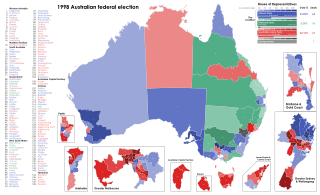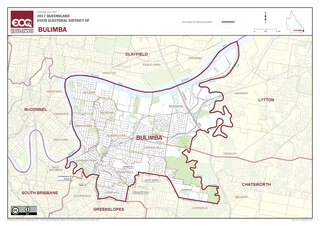
The 1950 United Kingdom general election was the first to be held after a full term of a majority Labour government. The general election was held on Thursday 23 February 1950, and was also the first to be held following the abolition of plural voting and university constituencies. The government's lead over the Conservative Party shrank dramatically, and Labour was returned to power but with an overall majority significantly reduced from 146 to just 5. There was a 2.8% national swing towards the Conservatives, who gained 90 seats. Labour called another general election the following year, which the Conservative Party won, returning Churchill to government after six years in opposition.

The 1951 United Kingdom general election was held twenty months after the 1950 general election, which the Labour Party had won with a slim majority of just five seats. The Labour government called a snap election for Thursday 25 October 1951 in the hope of increasing its parliamentary majority.

The 1998 Australian federal election was held to determine the members of the 39th Parliament of Australia. It was held on 3 October 1998. All 148 seats of the House of Representatives and 40 seats of the 76 seat Senate were up for election. The incumbent centre-right Liberal/National Coalition government led by Prime Minister John Howard of the Liberal Party and coalition partner Tim Fischer of the National Party defeated the centre-left Australian Labor Party opposition led by Opposition Leader Kim Beazley, despite losing the nationwide popular and two-party preferred vote. However, the Australian Labor Party gained seats compared to the previous election.

The 1996 Australian federal election was held to determine the members of the 38th Parliament of Australia. It was held on 2 March 1996. All 148 seats of the House of Representatives and 40 seats of the 76-seat Senate were up for election. The centre-right Liberal/National Coalition led by Opposition Leader John Howard of the Liberal Party and coalition partner Tim Fischer of the National Party defeated the incumbent centre-left Australian Labor Party government led by Prime Minister Paul Keating in a landslide victory. The Coalition won 94 seats in the House of Representatives, which is the largest number of seats held by a federal government to date, and only the second time a party had won over 90 seats at a federal election.

The Division of Barton is an Australian electoral division in the state of New South Wales.
The Electoral district of Leederville was a Legislative Assembly electorate in the state of Western Australia. The district was named for the inner northern Perth suburb of Leederville, which fell within its borders. Starting off as a vast seat covering most of Perth's northwestern hinterland, it shrank in size at various redistributions until, by the time of its abolishment, it was an inner suburban seat able to be absorbed into Wembley and Mount Hawthorn.

Bulimba is an electoral district of the Legislative Assembly in the Australian state of Queensland.

Maylands is a Legislative Assembly electorate in the state of Western Australia. Maylands is named for the inner northeastern Perth suburb of Maylands, which falls within its borders.

Albert Redvers George Hawke was an Australian politician who was the premier of Western Australia from 23 February 1953 to 2 April 1959. He represented the Labor Party.

The 1954 Australian federal election were held in Australia on 29 May 1954. All 121 seats in the House of Representatives were up for election, but no Senate election took place. The incumbent Liberal–Country coalition led by Prime Minister Robert Menzies defeated the opposition Labor Party led by H. V. Evatt, despite losing the two-party preferred vote. Although the ALP won the two-party preferred vote, six Coalition seats were uncontested compared to one ALP seat. The Psephos blog makes clear that if all seats had been contested, the Coalition would have recorded a higher primary vote than the ALP and possibly also a higher two-party preferred vote.

The 1951 Australian federal election was held in Australia on 28 April 1951. All 121 seats in the House of Representatives and all 60 seats in the Senate were up for election, due to a double dissolution called after the Senate rejected the Commonwealth Bank Bill. The incumbent Liberal–Country coalition led by Prime Minister Robert Menzies defeated the opposition Labor Party led by Ben Chifley with a modestly reduced majority, and secured a majority in the Senate. This was the last time the Labor party ever held a Senate majority. Chifley died just over a month after the election. This was the sixth and last federal election prior to the death of George VI a year later.

The 1949 Australian federal elections was held on Saturday December 10, All 121 seats in the House of Representatives and 42 of the 60 seats in the Senate were up for election. The incumbent Labor Party, led by Prime Minister Ben Chifley, was defeated by the opposition Liberal–Country coalition under Robert Menzies in a landslide. Menzies became prime minister for a second time, his first period having ended in 1941. This election marked the end of the 8-year Curtin-Chifley Labor government that had been in power since 1941 and started the 23-year Liberal/Country Coalition government. This was the first time the Liberal party won government at the federal level.
Half-senate elections were held in Australia on 9 May 1953. 32 of the seats in the Senate were up for election. This was the first time a Senate election had been held without an accompanying election of the House of Representatives. The two election cycles fell out of synchronisation after the 1951 double dissolution. While the term of the House was not due to expire until 1954, a Senate election was due by 1 July 1953.
This is a list of members of the Australian Senate from 1951 to 1953. The 28 April 1951 election was a double dissolution called by Prime Minister of Australia Robert Menzies in an attempt to gain control of the Senate and to pass the Commonwealth Bank Bill, if necessary at a joint sitting of both houses. All 121 seats in the House of Representatives, and all 60 seats in the Senate were up for election. The incumbent Liberal Party of Australia led by Menzies with coalition partner the Country Party led by Arthur Fadden defeated the Australian Labor Party led by Ben Chifley and gained control of the Senate with 32 seats to Labor's 28.
This article provides information on candidates who stood for the 1951 Australian federal election. The election was held on 28 April 1951.
This is a list of electoral results for the Division of Corangamite in Australian federal elections from the division's creation in 1901 until the present.

Elections were held in the Australian state of Queensland on 7 March 1953 to elect the 75 members of the state's Legislative Assembly. The Labor government was seeking its eighth continuous term in office since the 1932 election. It was the first electoral test for Vince Gair, who had become Premier of Queensland 14 months earlier after the death of Ned Hanlon.
James Arthur Clough was an Australian politician. He was the Liberal member for Parramatta in the New South Wales Legislative Assembly from 1956 to 1959, and for Eastwood from 1965 to 1988.
A by-election was held for the Australian House of Representatives seat of Corangamite on 29 August 1953. This was triggered by the death of Liberal MP Allan McDonald. A by-election for the seat of Lang was held on the same day.
This is a list of electoral results for the Electoral district of Gascoyne in Western Australian state elections.












